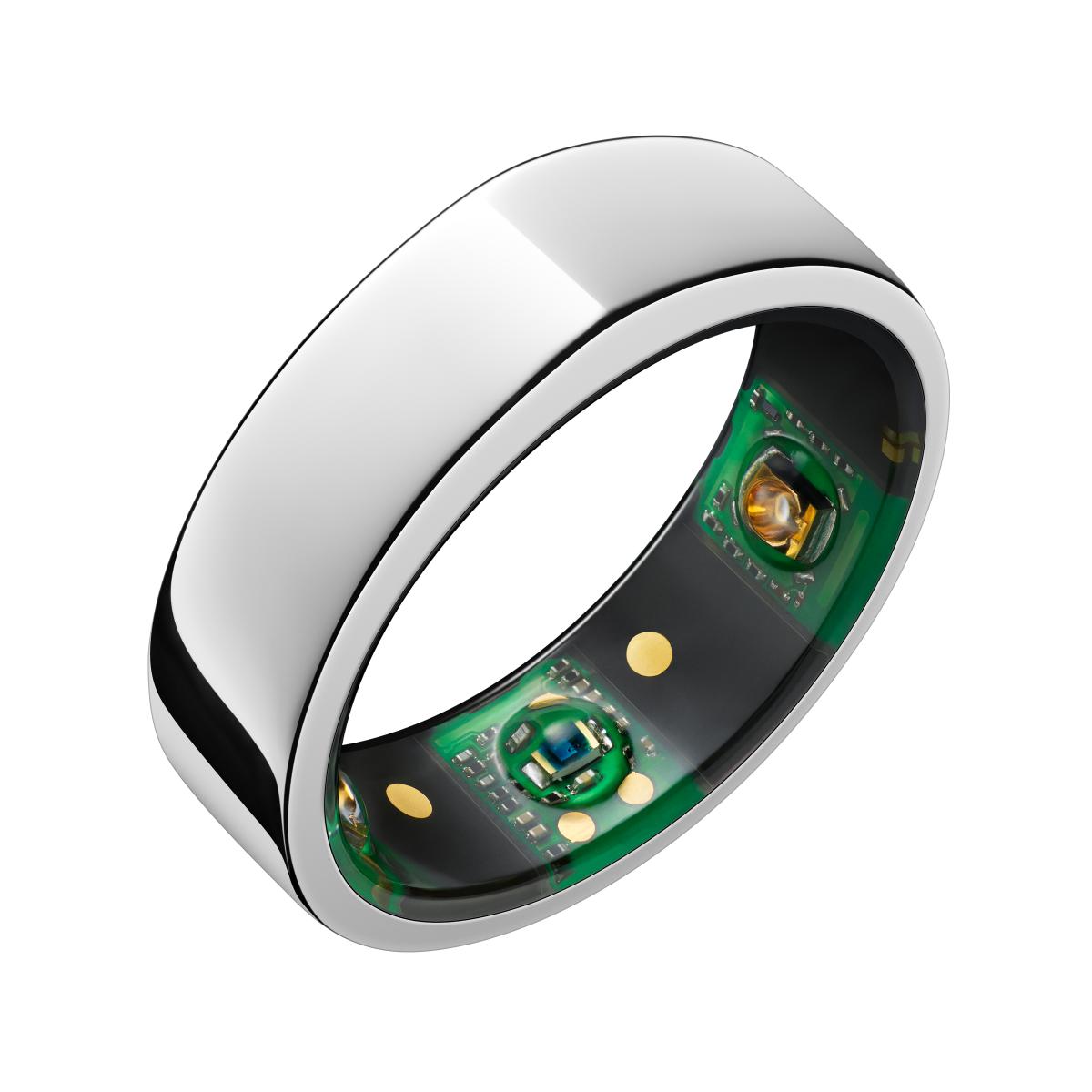The Story Behind the Ring That Is Key to the NBA's Restart
Despite Harpreet Rai’s favorite childhood NBA team, the Minnesota Timberwolves, not appearing in the league’s restart, Rai, the CEO of Oura, will be watching the resumption as intently as anyone. Amid the NBA’s thorough 100-plus page health and safety manual is a section on wearable devices, and though the Oura ring isn’t explicitly mentioned in the exhaustive memo, the company has partnered with the league and the ring could potentially be one of the most important technological devices found across the ESPN Wide World of Sports campus.
Players in the NBA’s bubble will have the option to wear Oura’s titanium ring, which costs the general public upwards of $300. It will monitor one’s heart rate, heart rate variability, respiratory rate and temperature—among other metrics—to craft a “Risk Score,” in an attempt to mitigate the silent spread of COVID-19 by flagging potential onset symptoms. As of late last week, Rai says the NBA ordered more than 2,000 devices, though exactly how many will be worn by players specifically remains unclear.
Nevertheless, the ring isn’t new to players around the league. In 2019, Cavaliers forward Kevin Love listed the seven-year-old company’s product among the 10 things he couldn’t live without. Former NBA greats Shaquille O’Neal and Manu Ginobili are investors in the company. This past February, the Lakers’ director of sports performance told the Los Angeles Times that some players wear the ring as a way to track their sleep patterns, one of the initial intention of the device’s designed. Rai adds that members of a handful of other teams use the ring regularly as well.
But its implementation as a potential COVID-19 early detection device? That’s a relatively new development for Oura.

On the morning of March 12, less than a day after the NBA suspended its season indefinitely, a Finnish entrepreneur named Petri Hollmen says he woke up feeling “quite normal.” Upon opening the Oura app, however, Hollmen learned that his “readiness rate” was surprisingly low. It was merely 54, compared to the 80-to-90 he says it normally displayed. The app additionally recorded a slight change in his body temperature overnight.
Hollmen called local authorities and alerted them to his mild temperature adjustment. While he had exhibited no outward symptoms of the coronavirus, they decided to test him anyway. Much to his surprise, he had contracted the virus. Hollmen credits the ring for alerting him to his slight temperature increase.
At around that same time and an entire ocean away, researchers at the University of California, San Francisco realized they needed to pivot away from their research on sleep patterns. Instead, taking advantage of the ring’s finger temperature sensors—a distinguishing factor of the Oura product, Rai says—researchers devised a study that utilizes the device to try and identify patterns that can predict onset of symptoms which can characterize COVID-19.
Oura donated more than 3,000 rings to health care workers across the country. Its ongoing TemPredict study now has more than 45,000 participants, according to Dr. Ben Smarr, one of the researchers working on the study and an assistant professor in Bioengineering at the University of California, San Diego.
Within a month of the league screeching to a halt, representatives from the NBA reached out to the company. Together, in cooperation with the National Basketball Players Association, they figured out a way to optimize the device for potential use in Orlando. Rai explains they additionally worked with top sports agents and agencies in developing its framework so that potential participants would feel secure using the product. According to the CEO, one of his company’s top priorities is to “make sure the player’s data is safe.”
When news of the device’s implementation trickled out, there were not surprisingly skeptics of the wearable. Some in the medical community still have doubts about its potential impact. Others, like Lakers forward Kyle Kuzma, voiced concerns that it looked like “a tracking device.” Nets guard Spencer Dinwiddie went so far as to ask if NBA commissioner Adam Silver was going to also wear one in Disney. Rai hopes to quell such fears. “I would just say, if they have any questions, I’m here to talk about it and keep getting better,” he says.
The league is also both strict and explicit in its protocols that team staff will not have access to the data collected by the ring, except for if it indicates a player may be at higher risk for a possible coronavirus infection. Additionally, no player data collected using the ring will be made available to the public or involved in future player negotiations.
Silver confirmed on Friday that there would, at least initially, be daily COVID-19 testing inside the bubble. Such a comment underscores a further intention of the ring—that it is not by any means a cure for COVID-19 or the only way to try and flag onset symptoms of coronavirus, but that it is instead another data point.
“It’s a great way to say we’re not adding any harm, but we may end up adding a lot of useful information,” Dr. Smarr says.
The NBA also likely won’t be the only sports league to take advantage of the product’s technology. Rai says that Oura has currently had conversations with “all the big ones,” referring to other sports leagues, and college sports present another landscape in which the device’s data collection could prove to be helpful, both for the athletes themselves and for researchers trying to better understand the virus.
The Wolves fan reflects that at the beginning of this calendar year, he never would have thought the company would have partnered with the NBA. He’s not alone in being surprised with how 2020 has turned out. Still, Rai is optimistic about the ring’s future.
“We’re convinced that it’s gonna be useful,” he says.
